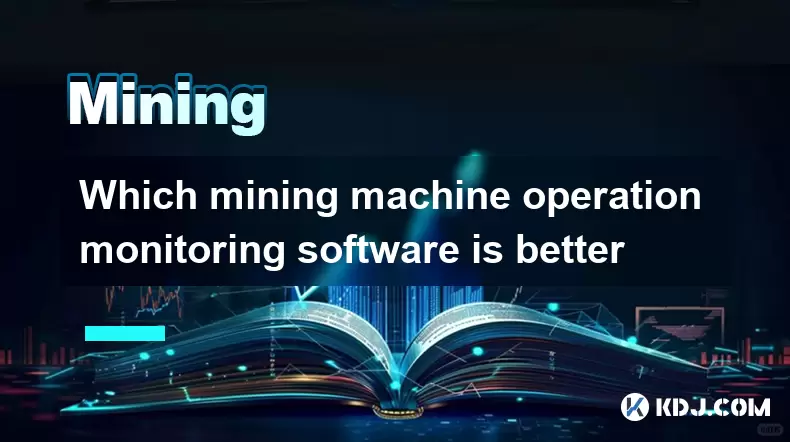-
 Bitcoin
Bitcoin $105,506.7886
5.08% -
 Ethereum
Ethereum $2,448.5436
10.64% -
 Tether USDt
Tether USDt $1.0004
0.00% -
 XRP
XRP $2.1938
10.73% -
 BNB
BNB $641.1726
2.97% -
 Solana
Solana $144.9271
9.87% -
 USDC
USDC $0.9999
-0.01% -
 TRON
TRON $0.2728
1.33% -
 Dogecoin
Dogecoin $0.1647
9.76% -
 Cardano
Cardano $0.5871
9.71% -
 Hyperliquid
Hyperliquid $37.7426
12.64% -
 Sui
Sui $2.7816
14.60% -
 Chainlink
Chainlink $13.5048
16.78% -
 Bitcoin Cash
Bitcoin Cash $450.1369
1.86% -
 UNUS SED LEO
UNUS SED LEO $9.1416
0.96% -
 Stellar
Stellar $0.2478
8.93% -
 Avalanche
Avalanche $18.2644
10.99% -
 Toncoin
Toncoin $2.9149
5.72% -
 Shiba Inu
Shiba Inu $0.0...01172
9.01% -
 Hedera
Hedera $0.1526
13.01% -
 Litecoin
Litecoin $84.6386
5.44% -
 Monero
Monero $315.4266
6.30% -
 Ethena USDe
Ethena USDe $1.0006
0.01% -
 Polkadot
Polkadot $3.4824
10.54% -
 Dai
Dai $1.0000
-0.02% -
 Bitget Token
Bitget Token $4.2707
5.83% -
 Uniswap
Uniswap $7.0582
15.65% -
 Pepe
Pepe $0.0...01003
13.82% -
 Pi
Pi $0.5454
9.30% -
 Aave
Aave $263.4696
17.20%
Which mining machine operation monitoring software is better
Mining machine monitoring software enhances efficiency by tracking hashrate, temperature, and power use, while offering alerts and remote access for optimal performance.
Jun 24, 2025 at 06:14 pm

Overview of Mining Machine Operation Monitoring Software
Mining machine operation monitoring software plays a crucial role in maintaining the efficiency and longevity of mining hardware. These tools allow miners to monitor hashrate, temperature, power consumption, and uptime in real time. For those managing multiple rigs or large-scale operations, selecting the right monitoring solution can significantly impact profitability and system stability.
Monitoring software is not just about displaying metrics; it's about actionable insights. The best tools provide alerts, logs, and integration with external platforms for data analysis. This enables users to make informed decisions about overclocking, cooling adjustments, or identifying underperforming devices quickly.
Key Features to Look for in Monitoring Tools
When evaluating which mining machine operation monitoring software is better, several features should be prioritized:
- Real-time Data Tracking: Displays live updates on hash rates, temperatures, fan speeds, and voltages.
- Alert Systems: Sends notifications via email, SMS, or push notifications when thresholds are breached.
- Remote Access: Allows users to check their mining status from any device connected to the internet.
- Compatibility: Works across different mining hardware brands like Bitmain, Canaan, and GPU-based systems.
- Customization Options: Offers settings for overclocking, undervolting, and tuning fans according to specific needs.
These features ensure that users can maintain optimal performance without constant manual checks.
Popular Mining Monitoring Software Options
Several software solutions have gained popularity among crypto miners due to their robust feature sets and ease of use:
- Awesome Miner: A powerful tool supporting both ASIC and GPU miners. It offers centralized management for large-scale mining farms and includes advanced alerting options.
- Minerstat: A cloud-based platform known for its user-friendly interface and comprehensive dashboard. It supports remote control, profit switching, and detailed analytics.
- CGMiner: One of the oldest open-source mining tools still widely used. It supports a variety of ASICs and GPUs and allows for deep customization through command-line parameters.
- BOSMiner: Specifically designed for Bitmain Antminer devices running the Braiins OS. It integrates seamlessly with Stratum V1/V2 protocols and provides SSH access for advanced users.
- EasyMiner: A beginner-friendly GUI-based miner compatible with CGMiner and BFGMiner backends. It simplifies the mining process but may lack some advanced monitoring capabilities.
Each of these tools caters to different types of users—ranging from hobbyists to enterprise-level operators.
How to Set Up and Use Monitoring Software Effectively
Setting up mining machine monitoring software involves several key steps:
- Choose the Right Tool: Based on your hardware type (ASIC/GPU), operating system (Windows/Linux), and scalability needs.
- Install the Software: Download and install the chosen monitoring application. Some may require additional dependencies or drivers.
- Connect to Your Miners: Configure IP addresses, ports, and API keys if required. Ensure all devices are on the same network.
- Configure Alerts: Set thresholds for temperature, hashrate drops, and downtime to receive timely notifications.
- Monitor Performance: Observe trends over time and adjust settings accordingly to optimize efficiency and reduce power costs.
Proper configuration ensures accurate data collection and proactive issue resolution.
Common Issues and How to Troubleshoot Them
Even with reliable monitoring tools, issues can arise. Here’s how to address some common problems:
- No Connection to Miner: Check network connectivity, firewall rules, and ensure the miner firmware supports API calls.
- Incorrect Hashrate Readings: Verify mining pool configurations and ensure the miner is not throttling due to overheating.
- Missing Metrics: Update software to the latest version and confirm compatibility with your mining hardware model.
- False Alerts: Adjust threshold values based on historical performance data to avoid unnecessary notifications.
- High Resource Usage: Optimize background processes and consider using lightweight alternatives like CLI-based tools.
Understanding these potential pitfalls helps in maintaining smooth operations.
Frequently Asked Questions
Q: Can I use multiple monitoring tools simultaneously?
Yes, it's possible to run more than one monitoring application at a time, but this may increase resource usage and potentially cause conflicts. It’s generally recommended to stick with one primary monitoring tool unless you need specialized features from another.
Q: Is there free mining monitoring software available?
Yes, several free options exist, including CGMiner, BFGMiner, and basic versions of Minerstat. However, premium features such as cloud syncing, multi-device support, and advanced analytics often require paid subscriptions.
Q: How do I integrate monitoring software with mining pools?
Most monitoring tools allow integration by entering pool details such as URL, port, username, and password. Some platforms also offer auto-detection features for popular mining pools.
Q: Does monitoring software affect mining performance?
Well-optimized monitoring software typically has minimal impact on mining performance. However, poorly coded or overly resource-intensive applications can consume CPU/GPU resources, reducing overall efficiency. Always choose lightweight and well-reviewed tools.
Disclaimer:info@kdj.com
The information provided is not trading advice. kdj.com does not assume any responsibility for any investments made based on the information provided in this article. Cryptocurrencies are highly volatile and it is highly recommended that you invest with caution after thorough research!
If you believe that the content used on this website infringes your copyright, please contact us immediately (info@kdj.com) and we will delete it promptly.
- Polymarket Eyes $1B Valuation: Betting Big on Prediction Markets
- 2025-06-24 22:45:13
- Kane Brown and Taylor Lautner: From Real-Life Friends to 'The Token Groomsman'
- 2025-06-24 22:45:13
- Fartcoin, Bitcoin, and Wealth Creation: A New Era of Crypto?
- 2025-06-24 23:05:12
- Sami Sheen's Breast Implant Removal: A Health-First Decision
- 2025-06-24 22:25:12
- BlockDAG's Token Campaign and Pre-Mainnet Growth Attracts Attention
- 2025-06-24 23:45:12
- AERO Eyes: Investor Buy and Whale Accumulation Signals Rally?
- 2025-06-24 23:30:12
Related knowledge

What is liquidity mining in DeFi? How to participate and calculate the income?
Jun 20,2025 at 03:21pm
Understanding Liquidity Mining in DeFiLiquidity mining is a core concept in the decentralized finance (DeFi) ecosystem that allows users to earn rewards by providing liquidity to decentralized exchanges (DEXs) or lending platforms. In traditional finance, liquidity providers are usually institutional players, but DeFi democratizes this process, enabling...

What is the mining mechanism of digital currency? What hardware and cost investment are required?
Jun 23,2025 at 06:29am
Understanding the Mining Mechanism of Digital CurrencyThe mining mechanism of digital currency is a foundational process that ensures transaction validation and network security. In most Proof-of-Work (PoW) cryptocurrencies like Bitcoin, miners compete to solve complex mathematical puzzles using computational power. The first miner to find a valid solut...

Analysis of hybrid mining protocol: PoW+PoS hybrid profit calculation
Jun 23,2025 at 10:15am
Understanding Hybrid Mining ProtocolsIn the realm of blockchain technology, consensus mechanisms are pivotal in maintaining network integrity and transaction validation. A hybrid mining protocol combines two or more consensus algorithms to achieve a balance between security, decentralization, and energy efficiency. The most commonly adopted hybrid model...

How to operate option mining? Hedging strategy and profit structure
Jun 21,2025 at 03:29pm
What is Option Mining?Option mining refers to a decentralized finance (DeFi) strategy where participants provide liquidity or take specific derivative positions in options protocols to earn rewards. Unlike traditional yield farming, option mining often involves liquidity provision for options markets, allowing users to generate returns through premiums ...

What are the advantages of Layer2 mining? Gas saving and project inventory
Jun 20,2025 at 04:50am
Understanding Layer2 Mining and Its SignificanceLayer2 mining refers to the process of participating in decentralized applications or protocols that operate on top of a primary blockchain (such as Ethereum) using scaling solutions like Optimism, Arbitrum, or zkSync. Unlike traditional mining on Layer1 blockchains, which often involves high computational...

Is contract mining safe? Key points of smart auditing and vulnerability prevention
Jun 19,2025 at 08:08pm
Understanding Contract Mining in the Cryptocurrency SpaceContract mining refers to a method within blockchain ecosystems where users can participate in mining operations through smart contracts. Unlike traditional mining, which requires physical hardware and technical expertise, contract mining allows participants to invest funds into a mining pool or p...

What is liquidity mining in DeFi? How to participate and calculate the income?
Jun 20,2025 at 03:21pm
Understanding Liquidity Mining in DeFiLiquidity mining is a core concept in the decentralized finance (DeFi) ecosystem that allows users to earn rewards by providing liquidity to decentralized exchanges (DEXs) or lending platforms. In traditional finance, liquidity providers are usually institutional players, but DeFi democratizes this process, enabling...

What is the mining mechanism of digital currency? What hardware and cost investment are required?
Jun 23,2025 at 06:29am
Understanding the Mining Mechanism of Digital CurrencyThe mining mechanism of digital currency is a foundational process that ensures transaction validation and network security. In most Proof-of-Work (PoW) cryptocurrencies like Bitcoin, miners compete to solve complex mathematical puzzles using computational power. The first miner to find a valid solut...

Analysis of hybrid mining protocol: PoW+PoS hybrid profit calculation
Jun 23,2025 at 10:15am
Understanding Hybrid Mining ProtocolsIn the realm of blockchain technology, consensus mechanisms are pivotal in maintaining network integrity and transaction validation. A hybrid mining protocol combines two or more consensus algorithms to achieve a balance between security, decentralization, and energy efficiency. The most commonly adopted hybrid model...

How to operate option mining? Hedging strategy and profit structure
Jun 21,2025 at 03:29pm
What is Option Mining?Option mining refers to a decentralized finance (DeFi) strategy where participants provide liquidity or take specific derivative positions in options protocols to earn rewards. Unlike traditional yield farming, option mining often involves liquidity provision for options markets, allowing users to generate returns through premiums ...

What are the advantages of Layer2 mining? Gas saving and project inventory
Jun 20,2025 at 04:50am
Understanding Layer2 Mining and Its SignificanceLayer2 mining refers to the process of participating in decentralized applications or protocols that operate on top of a primary blockchain (such as Ethereum) using scaling solutions like Optimism, Arbitrum, or zkSync. Unlike traditional mining on Layer1 blockchains, which often involves high computational...

Is contract mining safe? Key points of smart auditing and vulnerability prevention
Jun 19,2025 at 08:08pm
Understanding Contract Mining in the Cryptocurrency SpaceContract mining refers to a method within blockchain ecosystems where users can participate in mining operations through smart contracts. Unlike traditional mining, which requires physical hardware and technical expertise, contract mining allows participants to invest funds into a mining pool or p...
See all articles
























































































